Photo Credit: Adriel Heisey
Rio Grande River facts – a Western icon and the lifeblood of the desert Southwest
The Landscape
The third-longest river in the United States, the Rio Grande originates in the snow-capped peaks of Colorado’s San Juan Mountains, traversing 1,900 miles of desert and canyon before joining with the waters of the Gulf of Mexico. It is central to the region’s history and serves as its ecological, cultural, and economic engine.
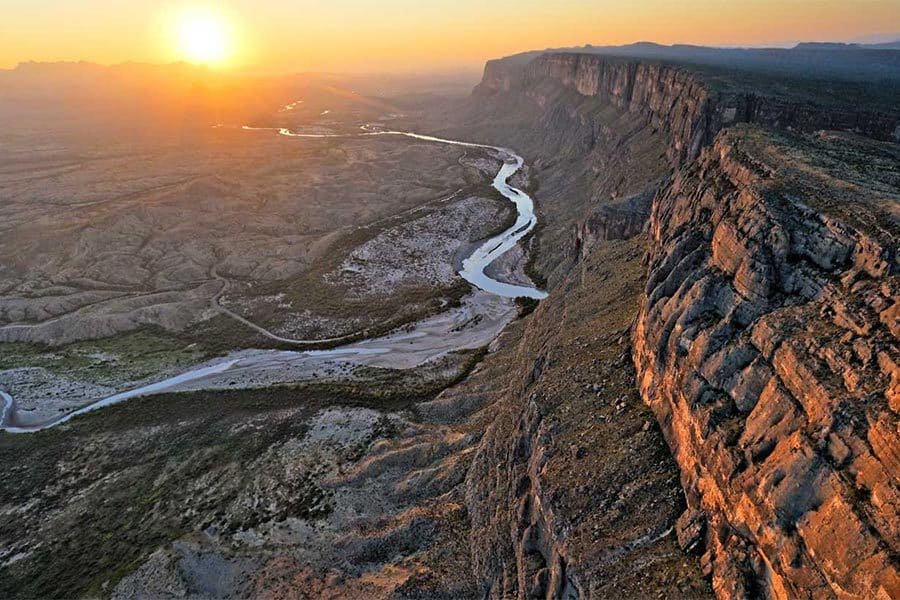
Photo Credit: Adriel Heisey
Before humans subdued it, the Rio Grande ran wild. Its dynamic flows shaped a unique and extensive riparian corridor through the desert southwest, carving geologic features like the 50-mile-long Rio Grande Gorge in northern New Mexico and the 1,500-foot walls of Santa Elena Canyon through Big Bend National Park in Texas.
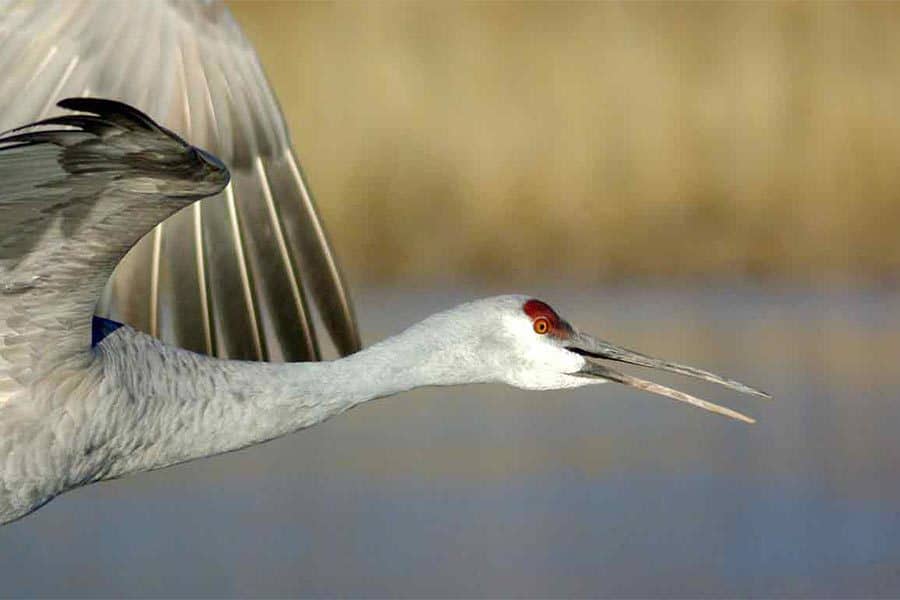
The Rio’s vast and rich floodplains, which extend between one and three miles wide, are home to more species than any other ecological community in the region—more than 400 species of native fish, wildlife, and plants that have inhabited its Basin for centuries. Declining and threatened species of the Rio include the Southwestern willow flycatcher, yellow-billed cuckoo, Rio Grande silvery minnow, Rio Grande chub, and Rio Grande sucker. Giant prehistoric fish, such as the shovelnose sturgeon and American eel, once swam these desert waters. And tens of thousands of sandhill cranes still overwinter each year in the central Rio Grande valley just south of Socorro, New Mexico, along the riverbanks in the Bosque del Apache National Wildlife Refuge, the largest contiguous cottonwood forest in the world.
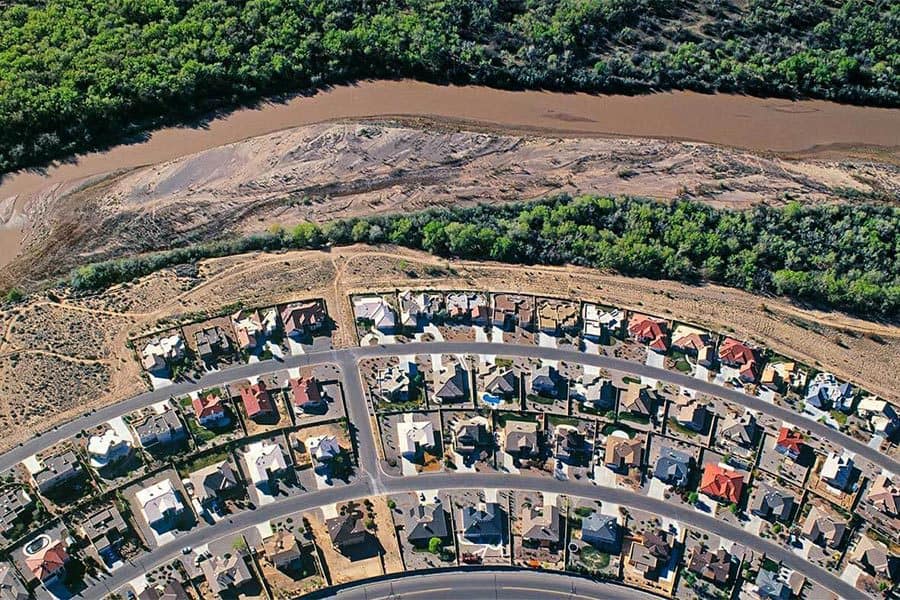
Photo Credit: Adriel Heisey
In an unforgiving landscape, the Rio Grande serves as the primary source of water for diverse communities of people as well as wildlife. The river historically supported more than 100 pueblos in the Rio Grande valley. The pueblos, as well as Spanish and European settlers, used the fertile soil in the Rio’s floodplain to farm along its banks. A network of irrigation canals (acequias) from southern Colorado to northern New Mexico were constructed to serve communities’ irrigation needs. Today, the Rio sustains 20 pueblos and tribes from New Mexico to Texas. The community irrigation system persists in northern New Mexico, and is protected by state law.
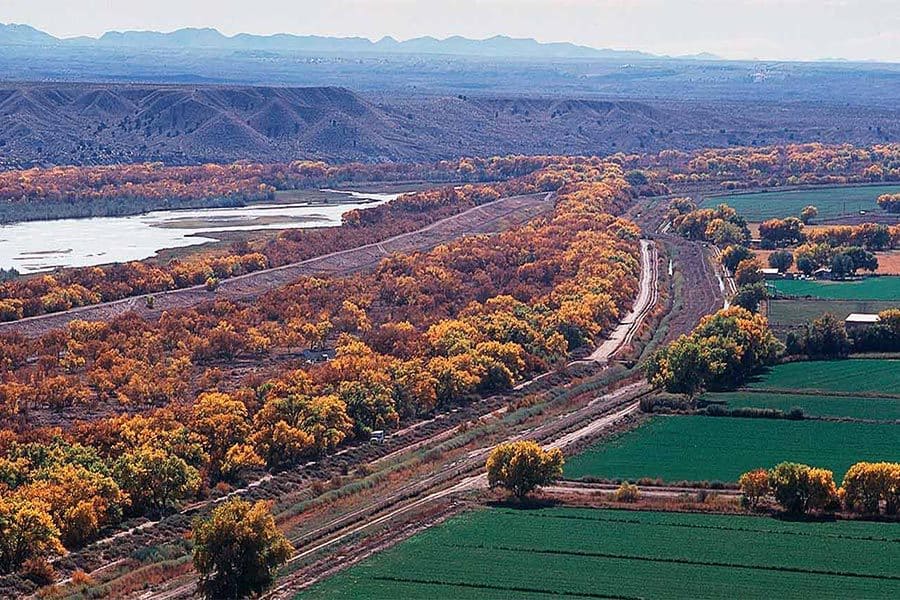
Photo Credit: Adriel Heisey
The Rio Grande is the heart of the economy in the Basin, which encompasses 10 million people and two million acres of land. The three largest metropolitan areas include Albuquerque, New Mexico (1.2 million people); El Paso, Texas (900,000 people); and Ciudad Juarez, Mexico (1.4 million people). Despite these cities’ growth and a general movement away from the traditional agricultural economy, agriculture commands the vast majority (87%) of the Basin’s surface water use.
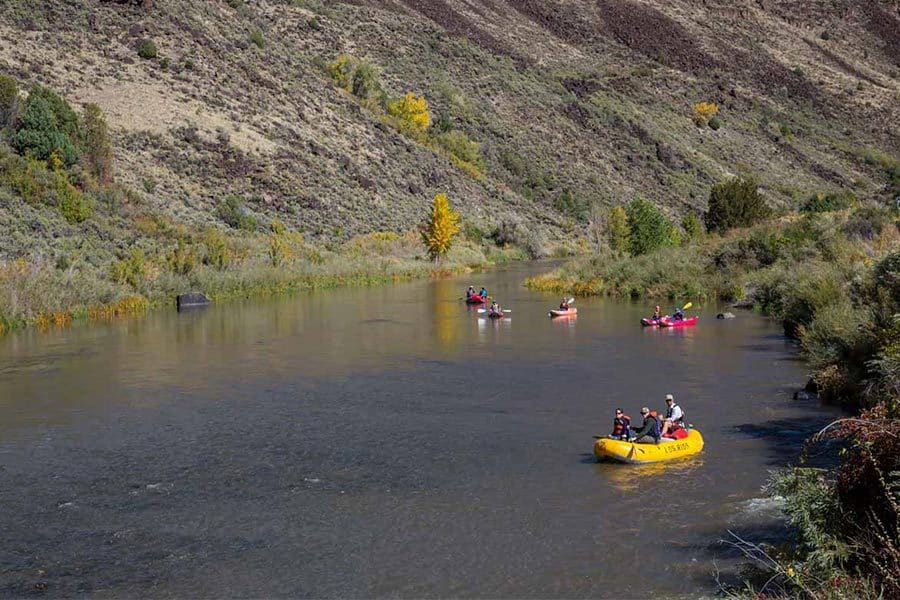
Photo Credit: Bob Wick
The Rio Grande also supports tourism and recreation economies. Protected landscapes along the main stem of the river include the Rio Grande del Norte National Monument (NM), Valle del Oro and Bosque del Apache National Wildlife Refuges (NM), Big Bend National Park (TX), and the Santa Ana, Laguna Acosta, and Lower Rio Grande National Wildlife Refuges (TX) in the United States. Three additional protected regions exist south of the Big Bend region in Mexico, including Cañon de Santa Elena, Ocampo and Maderas del Carmen Flora and Fauna Protection Areas. Congress also designated two reaches of the Rio Grande for protection as wild and scenic rivers, including the Rio Grande from the Colorado-New Mexico state line to Velarde, New Mexico (1968) and the Rio Grande through Big Bend National Park (1978).
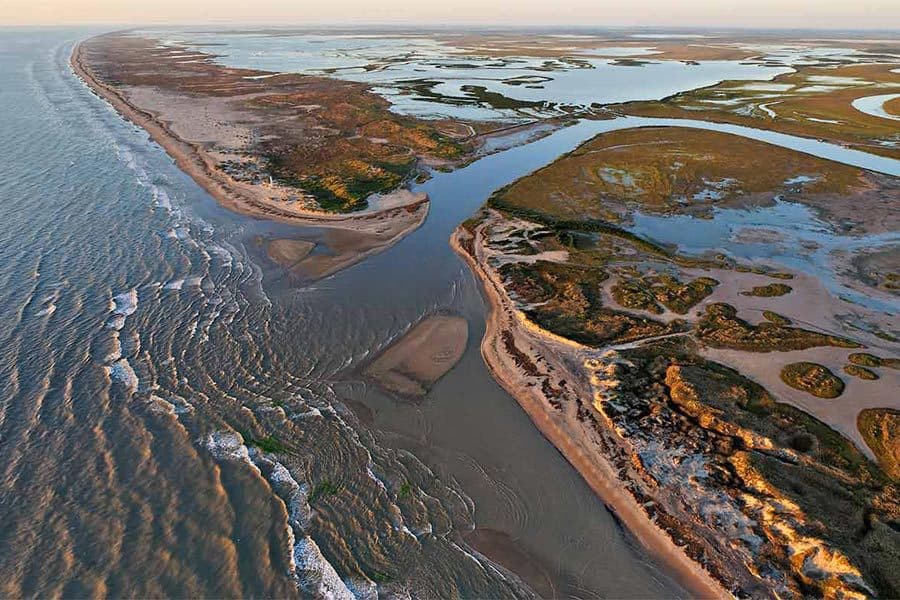
Photo Credit: Adriel Heisey
The Rio Grande is a vital artery that brings life to the desert. The region’s landscape and culture will disappear if the river is not sustained, and today’s Rio is pleading for sustenance. The year 2000 marked the first time in its history that the Rio Grande did not reach the Gulf of Mexico, and at present it’s not uncommon for less than one-fifth of the river’s historic flows to reach the sea. Increasing temperatures and flow declines due to climate change will only add additional burdens to the system that the river and its water managers are not equipped to address.
